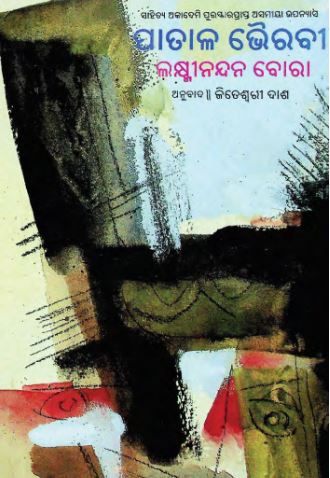Patala Bhairabi originally an Assamese novel by the renowned writer Lakshmi Nandan Bora, was translated into Odia by Jiteswari Das and published by Sahitya Academi in 2000. This literary piece delves into a captivating narrative enriched with cultural, spiritual, and existential themes.
At its core, “Patala Bhairabi” is an exploration of human emotions, societal norms, and mystical elements that transcend the mundane. The novel masterfully intertwines the palpable with the intangible, inviting readers into a world where the physical and metaphysical realms coexist. The title, “Patala Bhairabi,” evokes an enigmatic resonance, suggesting a connection to the subterranean or the netherworld, which is steeped in the Indian mythical and cultural context.
The story is set against the backdrop of Assam’s lush and evocative landscape, a setting that becomes a character in its own right. The locale’s vibrant geographical and cultural tapestry forms a perfect canvas for the unfolding drama.
Bora’s characters are multifaceted and deeply human. They grapple with inner conflicts, societal expectations, and spiritual quests. The protagonist, often seen as a representation of the everyman, embarks on a journey—both literal and metaphorical—that leads to self-discovery and enlightenment. Supporting characters, with their unique perspectives and motivations, add depth to the narrative, making it a rich, character-driven story.
Jiteswari Das’s translation of “Patala Bhairabi” into Odia is more than a linguistic transference; it is a cultural bridge that brings the essence of the original Assamese masterpiece to Odia-speaking readers. The translator succeeds in preserving the novel’s original flavor, ensuring that the cultural nuances, dialects, and idiomatic expressions resonate authentically in the Odia language. This translation broadens the reach of Bora’s work, allowing a new audience to experience the philosophical and narrative richness of the story.
Lakshmi Nandan Bora is celebrated for his eloquent prose and deep philosophical insights. His writing style in “Patala Bhairabi” is marked by its lyrical quality, vivid descriptions, and psychological depth. Bora’s narrative technique often blurs the line between reality and mysticism, rendering a dreamlike quality to the storytelling.
The novel’s structure seamlessly integrates plots and subplots, holding the reader’s attention with its seamless progression and intricate storytelling. The prose is imbued with allegorical significance, often prompting readers to reflect on larger existential themes.
“Patala Bhairabi” holds significant cultural value as it highlights the rich traditions, folklore, and spiritual heritage of Assam. By translating this work into Odia, Jiteswari Das has facilitated a cultural exchange that enriches the literary landscapes of both Assam and Odisha. It serves as a testament to the shared cultural fabric of India, where regional diversity finds common ground in universal themes.
Since its publication, “Patala Bhairabi” has been lauded for its profound narrative and sophisticated translation. Scholars and readers alike appreciate the novel for its ability to transcend regional boundaries, offering a universally relatable and philosophically enriching experience.
In conclusion, “Patala Bhairabi” is a sterling example of regional literature that gains a new lease of life through thoughtful translation. It remains a significant contribution to Indian literary canon, celebrated for its depth, lyrical beauty, and the successful bridge between Assamese and Odia literary traditions.
Books Info
| Books name | Patala Bhairabi/ପାତାଳ ଭୈରବୀ |
| Author | Lakshmi Nandan Bora; Jiteswari Das, Tr. |
| No Of pages | 277 |
| Publisher | NA |
| Publication | 2000 |
| Printed At | Mitra Press |
| Distributor | NA |

